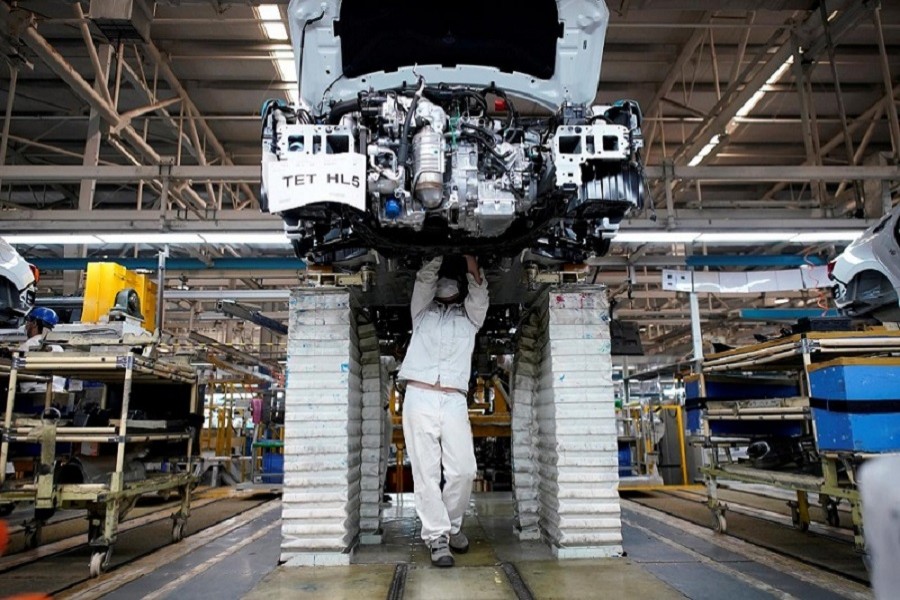
Published :
Updated :

China’s factory gate prices fell for a fifth straight month in June as the coronavirus pandemic weighed heavily on industrial demand, although signs of a pickup in some parts of the sector suggest a slow economic recovery remains intact.
The producer price index (PPI) in June fell 3.0 per cent from a year earlier, China’s National Bureau of Statistics (NBS) said in a statement on Thursday, slower than a 3.2 per cent fall tipped by a Reuters poll of analysts and a 3.7 per cent decline in May.
However, in a sign of potential improvement in the manufacturing sector, PPI rose 0.4 per cent from the previous month, turning around from a 0.4 per cent decline in May.
“The change was driven by an across-the-board increase in raw materials, manufactured goods and consumer goods price inflation,” said Martin Rasmussen, China Economist at Capital Economics, in a note after the data release.
“With fiscal stimulus and infrastructure spending still ramping up, we think that economic activity and producer prices are set to recover further in the coming months.”
Indeed, orders for infrastructure materials and equipment have helped industrial output recover faster in China than most places emerging from COVID-19 lockdowns, but further expansion will be hard to attain without stronger broad-based demand and exports.
ANZ expects China’s PPI will stay in deflation this year, with declines averaging around 2.0% due to the prolonged pandemic.
Even with signs of a moderation in China’s upstream deflation, “it remains debatable if the unprecedented extent of policy stimulus will lead to a quick rebound in industrial inflation,” said Zhaopeng Xing, China Markets Economist at ANZ.
An official survey on the manufacturing sector last week showed activity expanded in June although still at a modest pace, as Beijing’s success in drastically reducing the number of new coronavirus infections allowed it to reopen its economy.
But export orders have continued to contract, reflecting the widespread global impact of the COVID-19 pandemic. Many Chinese manufacturers are grappling with falling profits and have been forced to let workers go to cut costs.
The pandemic, which has infected more than 12 million and killed about 546,000 globally, has sunk world demand and sent many economies into deflation as factories and retailers shut their doors.
The inflation data also showed consumer prices rose 2.5 per cent from a year earlier, in line with forecasts and slightly faster from 2.4 per cent growth in May.
Core inflation - which excludes food and energy costs - remained benign last month at 0.9 per cent,easing from May’s rise of 1.1 per cent.
Some analysts have recently warned of inflationary pressures from the heavy floods across a large part of the country this summer, which could hit vegetable supplies and drive a surge in prices.
China’s economy is expected to return to growth in the second quarter, as it recovers from the sharp contraction in the January-March quarter when the coronavirus outbreak in the mainland reached its peak.


 For all latest news, follow The Financial Express Google News channel.
For all latest news, follow The Financial Express Google News channel.